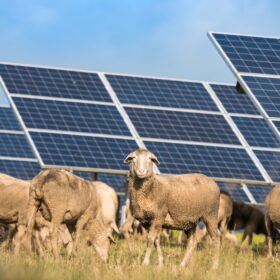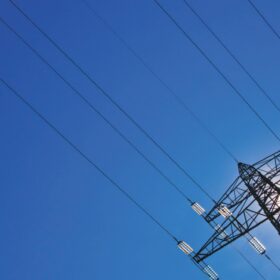Top News
Epic battery begins full operations in South Australia

EDP to fast-track 1.7 GW of solar and storage in eastern states

Silver prices surge, yet ‘thrifting’ poses little threat to solar cell, module quality
Out now - pv magazine Global October Edition
pv magazine USA Week 2025
pv magazine Webinar
pv magazine Webinar

Vanuatu runs tender for supply, installation of solar systems

CopperString cutbacks mapped out in Queensland’s Energy Roadmap
Australian-made solar thermal system deployed at iconic Sydney pool
Rivet connection system fast-tracks installs and maintenance
700 MW firm energy by 2031 targeted in South Australia’s first FERM tender
Press Releases
Ark Energy and Elecnor sign ECI agreement
New Hydrogen Headstart round continues industry scale-up
Solar-plus-storage gains popularity among Australian families
Melbourne Renewable Energy Hub helps Victoria become the first state to store a GW of energy
Opinion & Analysis
Featured
Snowy 2.0 cost blowouts might be OK if the scheme stored power more cheaply than batteries. But it won’t
Charge ahead: Designing V2G systems to transform EVs into grid-enhancing powerhouses
Electric vehicle sales and renewable energy production are on the rise globally. The United States alone added 5.8 million light-duty electric vehicles to its roads as of 2023, leading the US Department of Energy to predict that electricity demand for EV charging could increase overall US electricity consumption by 20-50% by 2050.
One quiet change is about to let you export much more solar
Australia has more solar panels per person than anywhere else in the world. One in three houses now has rooftop solar. Our grid operators are working hard to adjust to a new reality where the collective output of rooftop solar is one of our largest sources of power.
Why data-driven planning will shape the success of Australia’s 2035 climate goals
Achieving Australia’s 2035 energy goals needs engineering firms to have project intelligence at their fingertips, through unified, real-time data about a project, its people, and finance, to ensure accurate forecasting, avoid delays and maximise performance.
Rooftops rather than REZs are ticket for Australia’s energy future
Australia is at a crossroads in its energy transition. Policymakers are doubling down on centralised renewable energy zones, while businesses and households are voting with their wallets, putting solar on rooftops and batteries in garages, warehouses, and factories.
Impact of sunlight spectral shifts on bifacial perovskite-silicon tandem solar cells
Experts from the International Solar Energy Society explain how regional spectral shifts of the standard spectral distribution of sunlight bring new insights into the performance of bifacial perovskite-silicon tandem solar cells.
Markets & Policy
Featured
Vehicle-integrated photovoltaics for biofuel-powered transport trucks
Choose to reuse: second-hand solar panel resale certification proposed
Block chain-based tracking of a solar panel’s lifecycle or a national certification program for second-hand modules, are two strategies University of South Australia researchers studied in developing a game plan for keeping panels out of landfill.
CEFC annual number crunch lands on record $4.7 billion in commitments
A record $4.7 billion in 2024-25 investment commitments, more than 2.5 times the value of the previous year, have been reported in the annual report of the Clean Energy Finance Corporation.
Hybrid developments make clean sweep of Capacity Investment Scheme Tender 4
Investment confidence in solar and battery storage development is clear-cut given over 50% of 20 successful Capacity Investment Scheme Tender 4 bids are for large scale hybrid projects.
Potentia lands IPC approval for 1 GW solar and battery project
The 1 GW Tallawang solar and battery hybrid project being developed in central west New South Wales has secured final state planning approval after being forced to an independent tribunal after attracting more than 50 objections.
IEA lowers 2025-30 forecast for solar growth
The International Energy Agency has cut its 2025–30 renewables forecast by 5%, citing lower solar additions, though PV still represents nearly 80% of 4.6 TW expected growth.
Installations
Featured
Frontier unveils expansion strategy for Waroona solar and battery project
Genesis and FRV scrap solar development partnership
New Zealand government-backed utility Genesis Energy and FRV Australia, the local arm of global renewable energy developer Fotowatio Renewable Ventures, have dissolved their solar development joint venture just months after delivering their first PV project.
Amber continues overseas push with home energy management tech
Energy retailer and technology company Amber Electric has secured $10 million in new funding to continue scaling its residential solar and battery automation tech into overseas markets.
Rooftop solar install rates rise as battery market shifts
Australia’s rooftop solar market has climbed by more than 16% in the past month with the latest data revealing that 237 MW of small-scale rooftop PV capacity was installed last month as consumers increasingly turned to solar-plus-storage solutions.
Ace lands fast approval for NSW solar-plus-storage project
A 141 MWdc solar farm and big battery with up to four hours of storage proposed for central western New South Wales has been given the green light by the federal government less than three weeks after plans were submitted for assessment.
New sieving tech for solar cell silver recovery
Researchers at University of New South Wales have reported details about a novel sieving-aids technology that improves the separation of metal fragments from other components when recycling end-of-life PV panels. The patented process reportedly enhances the recovery of silver.
Technology
Featured
Researchers test solar panel cooling using stagnant water layer
Australian researchers achieve 27.06% efficiency with triple-junction perovskite solar cell
A team of researchers led by the University of Sydney has fabricated a triple-junction perovskite-perovskite-silicon tandem solar cell that achieved a power conversion efficiency of up to 27.06% and set new standards for thermal stability.
Operational faults cut returns in 19% of battery storage projects
A recent report from battery intelligence firm Accure reveals that while most battery energy storage systems operate reliably, nearly 19% of projects experience reduced returns due to technical issues and unplanned downtime.
Novel fluorine recovery method promises polymer recycling benefits
Researchers have developed a novel defluorination method to dispose of PTFE, used in solar componentry and electric cable coating, that converts its constituent fluorine compounds and could enable eco-friendly polymer recycling.
Building-integrated concentrating photovoltaics for vertical applications
An Indian-British research team has developed a building-integrated linear concentrating PV facade by sandwiching an asymmetric compound parabolic concentrator, PERC cells, and encapsulation layers between two sheets of glass.
Autonomous robot module installation trial fast tracks Victorian solar farm
The installation of almost 500,000 solar panels at Victorian solar farm will be completed this week, thanks in part to a collaboration with US robotics company Luminous, which has trialled its autonomous fleet at the site, during the construction phase.
Manufacturing
Featured
Solar module prices to rise 9% in Q4, says Wood Mackenzie
Singlet fission research breakthrough unlocks high solar cell efficiency
University of New South Wales researchers have filed patent protection and are working to scale production of a new class of photostable organic molecules proven to boost silicon solar cell efficiency, reduce heat and extend panel lifetimes using singlet fission.
Clickcon launches solar PV fence for residential, commercial sites
Germany-headquartered mounting system specialist Clickcon has developed a new vertical ground-mounted system compatible with commercially available framed PV modules.
Risen presents 475 W TOPCon solar panel with 23.8% efficiency
Chinese solar module maker Risen Energy has introduced a 475 W bifacial solar module with a power conversion efficiency of 23.8% to the Australian market, targeting the rooftop market.
KAUST achieves 28.7% efficiency in perovskite-perovskite-silicon tandem solar cell
An international team of researchers led by King Abdullah University of Science and Technology has fabricated a triple junction perovskite-perovskite-silicon tandem solar cell that achieved a world record efficiency for this cell architecture. The device incorporates stabilised perovskites that ensure improved performance and stability.
PVH secures tracker supply contract for Fulham solar project
Spanish company PV Hardware has been tapped to supply locally manufactured solar trackers for the 80 MW Fulham Solar Farm being developed by Octopus Australia in southeast Victoria.
Energy Storage
Featured
Transgrid to award 1 GW grid-forming battery contracts by 2026
Supernode 8-hour battery one step closer as first stage starts up
Australian green infrastructure investor and developer Quinbrook Infrastructure Partners’ Supernode battery Stage 1 substation has been successfully connected to Queensland’s transmission network.
Neoen notches milestones for more than 2.2 GWh of battery storage in WA
Renewables developer Neoen has commenced construction of its first six-hour battery energy storage system and has also delivered Australia’s biggest battery to date – four months ahead of schedule.
NSW tender targets 500 MW of new firming capacity
The New South Wales government has launched a tender targeting 500 MW of firming and demand response capacity to further boost power supply reliability as the state’s coal-fired generators are shut down.
South Korea hit by ‘digital Pearl Harbor’ as aging battery sparks data centre fire
A lithium-ion battery explosion at a national data centre in South Korea disabled hundreds of government systems, highlighting the vulnerabilities of a highly centralised digital infrastructure.
Australia’s first eight-hour battery registered with AEMO
Australia’s energy transition has reached a new milestone with the nation’s first eight-hour duration battery energy storage system now registered and eligible to begin commissioning and testing ahead of commercial operation.



